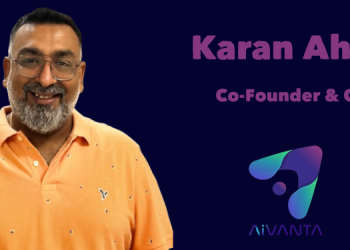The world has been looking at Indian markets with starry eyes over the last few years. Indian audiences are embracing new products, new technologies, and everything in between. This trend has widened the horizon. One of the fastest-growing industries continues to be Fast Moving Consumer Goods (FMCG). Especially in the context of Indian markets, the growth of FMCG consumption and advertising is influenced by several unique factors and trends.
1. Convenience vs. Value-Seeking Consumers
There are two types of consumers. The first seek convenience to suit their fast-paced urban lifestyle. The second type of consumer seeks additional value from the money they spend.
Convenience Consumers: They prioritise ease, speed, and accessibility in their purchasing decisions. Open to shopping online, they are tech-savvy and appreciate the convenience of digital payments, subscription services, and the ability to reorder products easily. You find them regularly using Q-commerce platforms, like Zepto, Zomato, and Swiggy.
Value-Seeking Consumers: They are attracted to discounts, promotions, and offers, like buy-one-get-one deals. You will find them in retail chains like Dmart and Smart Bazar. They would usually shop at the start of the month and make bulk purchases. At McVitie’s, we offer a variety of products on quick commerce platforms and also, launched family discounts across the portfolio to attract consumers in retail stores.
2. Rural vs. Urban Consumers
The way an FMCG product reaches and is consumed by rural and urban consumers is strikingly different. This is why, the advertising as well as product placement need to be well thought out.
Urban Consumers: The rapid urbanisation has increased the demand for FMCG products. More consumers seek premium products now. Keeping up with this demand, we introduced a global range to McVitie’s portfolio in India. Now, Indians munch on McVitie’s Chocolate Coated Digestives, thins, and nibbles too.
Rural Consumers: Keeping their disposable income at the forefront, smaller and affordable products will be better received. With the McVitie’s Hobnobs, we started at an opening price point (OPP) of INR 65-70, but what worked out was an OPP of INR 25-30. We applied the same strategy to McVities’ Tasties with an OPP of INR 10 and saw the desired results.
3. Healthy vs. Tasty Products
While the pandemic brought a wave of health consciousness, people also demand tasty products. With the ‘hustle’ culture and high-stress lifestyle, people also find comfort in indulgent foods. Listening to their target audiences will help FMCG producers cater to their needs more productively
Healthy Products: The surge in demand for organic foods makes companies relook and roll out better quality products. Recognising this trend, we launched McVitie’s Millet Almond Cookies, which also has Jowar, Bajra, and Ragi.
Tasty Products: Comfort foods such as chocolates and ice creams have also seen a rise in consumption. However, consumers are looking for permissible indulgence — products that are tasty but also healthy. This will be a tricky section, which will continue to see immense growth. McVitie’s Hobnobs Chocochips with 36% oats fit this exact bracket.
4. Gen Z vs. The Rest
At any given time, we’re catering to Millennials, Gen-Z, the parents of Gen Alpha, and Baby Boomers. This makes crafting the right product and communicating it effectively to the right audience a delicate task. Understanding the preferences of each group helps develop the right strategy.
Gen Z: This digital-first group values ethical consumption and engages heavily on social media. They seek accountability and responsibility from the brand. To reach them, we leverage influencers, social media, and Q-commerce, catering to their need for instant gratification.
Millennials & Others: This cluster of different generations often seeks dependability. They prefer brands that align with their values, those that support consumers, and are authentic. For them, we combine digital and physical experiences, seamlessly transitioning from online research to in-store purchase.
5. Digital vs Traditional Media
With a smartphone in every hand, ruling out one medium over another is implausible for effective communication. Both, digital and traditional media, have their own pros and cons and are equally important in different contexts. Often, consumers across generations consume information on all available platforms. This makes it essential for marketers to switch between the two mediums seamlessly. At McVities, we follow a balanced approach, applying different strategies for different parts of the portfolio. We also switch our mediums based on the objective of the campaign.
The deeper one digs, the more interconnected the web of FMCG consumption and advertising continues to grow. It is safe to say that these offshoots are interconnected and often influence one another, contributing to the overall growth. As consumer behaviours evolve, FMCG companies must remain agile and responsive to these trends to sustain growth.

















